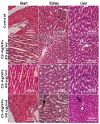Synergistic Nanocomposites of Different Antibiotics Coupled with Green Synthesized Chitosan-Based Silver Nanoparticles: Characterization, Antibacterial, in vivo Toxicological and Biodistribution Studies
- PMID: 33116504
- PMCID: PMC7568684
- DOI: 10.2147/IJN.S274987
Synergistic Nanocomposites of Different Antibiotics Coupled with Green Synthesized Chitosan-Based Silver Nanoparticles: Characterization, Antibacterial, in vivo Toxicological and Biodistribution Studies
Retraction in
-
Synergistic Nanocomposites of Different Antibiotics Coupled with Green Synthesized Chitosan-Based Silver Nanoparticles: Characterization, Antibacterial, in vivo Toxicological and Biodistribution Studies [Retraction].Int J Nanomedicine. 2021 Dec 9;16:8035-8036. doi: 10.2147/IJN.S352905. eCollection 2021. Int J Nanomedicine. 2021. PMID: 34916793 Free PMC article.
Abstract
Purpose: The present study reports chitosan functionalized green synthesized CS-AgNPs, conjugated with amoxicillin (AMX), cefixime (CEF), and levofloxacin (LVX) for safe and enhanced antibacterial activity.
Methods: The CS-AgNPs and conjugates CS-AgNPs+AMX CS-AgNPs+CEF, and CS-AgNPs+LVX were characterized by UV-Vis, FTIR, SEM, TEM, EDX spectroscopy. The size distribution and zeta potential were measured using the dynamic light scattering (DLS) technique. The interaction between CS-AgNPs and antibiotic molecules was also investigated using UV-Vis spectroscopy at the concentrations of 5, 50, 500, and 5000 µM for each antibiotic. Antibacterial activity and synergism were assessed by the Fractional Inhibitory Concentration (FIC) index. The mechanism for synergistic activity was investigated by the detection of hydroxyl species based on the chemiluminescence of luminol. The biocompatibility index (BI) was calculated from IC50 using the HeLa cell line. In vivo toxicity and tissue distribution of silver ions were evaluated on Sprague Dawley rats. Physical interactions of antibiotics and significant (P<0.05) antibacterial activity were observed after loading on CS-AgNPs surfaces.
Results: The spherical shape nanocomposites of CS-AgNPs with different antibiotics were prepared with mean size ranges of 80-120 nm. IC50 of antibiotics-conjugated CS-AgNPs decreased compared to CS-AgNPs. The biocompatibility (BI) index showed that antibiotics-conjugated CS-AgNPs have high antibacterial potential and low toxicity. Highly significant (P<0.005) increase in the generation of hydroxyl species indicated the radical scavenging mechanism for synergistic activity of CS-AgNPs after combined with different antibiotics. Biochemical analysis and histopathological examinations confirmed low toxicity with minor hepatotoxicity at higher doses. After oral administration, extensive distribution of Ag ion was observed in spleen and liver.
Conclusion: The study demonstrates positive attributes of antibiotics-conjugated CS-AgNPs, as a promising antibacterial agent with low toxicity.
Keywords: antibiotic resistance; chitosan functionalized silver nanoparticles; in vivo toxicity; synergistic antibacterial activity; tissue distribution.
© 2020 Asghar et al.
Conflict of interest statement
The authors report no conflicts of interest in this work.
Figures










Similar articles
-
Antibacterial, anticoagulant and cytotoxic evaluation of biocompatible nanocomposite of chitosan loaded green synthesized bioinspired silver nanoparticles.Int J Biol Macromol. 2020 Oct 1;160:934-943. doi: 10.1016/j.ijbiomac.2020.05.197. Epub 2020 May 26. Int J Biol Macromol. 2020. Retraction in: Int J Biol Macromol. 2025 Jul;318(Pt 1):144738. doi: 10.1016/j.ijbiomac.2025.144738. PMID: 32470586 Retracted.
-
Green synthesis of silver nanoparticles (AgNPs) and chitosan-coated silver nanoparticles (CS-AgNPs) using Ferula gummosa Boiss. gum extract: A green nano drug for potential applications in medicine.Int J Biol Macromol. 2025 Feb;291:138619. doi: 10.1016/j.ijbiomac.2024.138619. Epub 2024 Dec 10. Int J Biol Macromol. 2025. PMID: 39667473
-
Assessment of the Effect of Surface Modification of Metal Oxides on Silver Nanoparticles: Optical Properties and Potential Toxicity.Cell Biochem Biophys. 2024 Jun;82(2):1213-1224. doi: 10.1007/s12013-024-01272-2. Epub 2024 May 14. Cell Biochem Biophys. 2024. PMID: 38743135
-
Functional potential of chitosan-metal nanostructures: Recent developments and applications.Int J Biol Macromol. 2024 Dec;282(Pt 2):136715. doi: 10.1016/j.ijbiomac.2024.136715. Epub 2024 Oct 23. Int J Biol Macromol. 2024. PMID: 39454923 Review.
-
Recent Advancements in Metallic Au- and Ag-Based Chitosan Nanocomposite Derivatives for Enhanced Anticancer Drug Delivery.Molecules. 2024 May 19;29(10):2393. doi: 10.3390/molecules29102393. Molecules. 2024. PMID: 38792255 Free PMC article. Review.
Cited by
-
Discovery of Anti-MRSA Secondary Metabolites from a Marine-Derived Fungus Aspergillus fumigatus.Mar Drugs. 2022 Apr 28;20(5):302. doi: 10.3390/md20050302. Mar Drugs. 2022. PMID: 35621953 Free PMC article.
-
Antimicrobial Actions and Applications of Chitosan.Polymers (Basel). 2021 Mar 15;13(6):904. doi: 10.3390/polym13060904. Polymers (Basel). 2021. PMID: 33804268 Free PMC article. Review.
-
Green Synthesis and Characterization of Carboxymethyl Cellulose Fabricated Silver-Based Nanocomposite for Various Therapeutic Applications.Int J Nanomedicine. 2021 Aug 11;16:5371-5393. doi: 10.2147/IJN.S321419. eCollection 2021. Int J Nanomedicine. 2021. Retraction in: Int J Nanomedicine. 2022 Mar 08;17:987-988. doi: 10.2147/IJN.S364552. PMID: 34413643 Free PMC article. Retracted.
-
Advances in silver nanoparticles: a comprehensive review on their potential as antimicrobial agents and their mechanisms of action elucidated by proteomics.Front Microbiol. 2024 Jul 31;15:1440065. doi: 10.3389/fmicb.2024.1440065. eCollection 2024. Front Microbiol. 2024. PMID: 39149204 Free PMC article. Review.
-
Applications of Silver Nanoparticles in Dentistry: Advances and Technological Innovation.Int J Mol Sci. 2021 Mar 2;22(5):2485. doi: 10.3390/ijms22052485. Int J Mol Sci. 2021. PMID: 33801230 Free PMC article. Review.
References
-
- Kumari RM, Goswami R, Nimesh S. Application of nanotechnology in diagnosis and therapeutics. Nanotechnol Energy Environ Eng. 2020;413–440.
-
- Asghar MA, Zahir E, Asghar MA, Iqbal J, Rehman AA. Facile, one-pot biosynthesis and characterization of iron, copper and silver nanoparticles using Syzygium cumini leaf extract: as an effective antimicrobial and aflatoxin B1 adsorption agents. PLoS One. 2020;15(7):p.e0234964. doi:10.1371/journal.pone.0234964 - DOI - PMC - PubMed
-
- Alavi M, Naser K, Tahereh V. Antibacterial, antibiofilm, antiquorum sensing, antimotility, and antioxidant activities of green fabricated Ag, Cu, TiO2, ZnO, and Fe3O4 NPs via protoparmeliopsis muralis lichen aqueous extract against multi-drug-resistant bacteria. ACS Biomat Sci Eng. 2019;5:4228–4243. doi:10.1021/acsbiomaterials.9b00274 - DOI - PubMed
Publication types
MeSH terms
Substances
LinkOut - more resources
Full Text Sources
Medical

